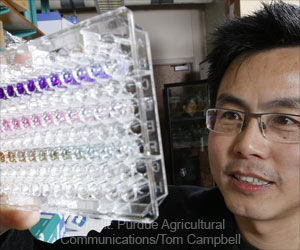- New advances in liquid biopsies and the applications in cancer detection and monitoring
- Liquid biopsies can now monitor cancers closely in a minimally non-invasive method
- Also, liquid biopsies can detect, characterize, and monitor cancers way better than conventional methods
The search for minimally invasive methods to detect and monitor cancers has been on for quite some time. The last ten years have seen tumor-derived material in various biofluids like saliva, urine and cerebrospinal fluid. There have been numerous advances in the development of sensitive assays to detect cancer-specific analytes in biofluids.
Read More..
What are the Types of Liquid Biopsies?
In liquid biopsies, the analytes used include circulating tumor cells (CTCs), cell-free tumor DNA (CtDNA), proteins, metabolites, mRNA, miRNA and exosomes. While CTCs are rare in early cancers, a good quantity can be found in late-stage cancers.When cancers release DNA into body fluids, they can be detected with high precision digital technologies like massively parallel sequencing where each DNA is analyzed separately. In normal individuals with early-stage cancer, almost 3-9 ng of cell-free tumor DNA
(ctDNA) is found per milliliter of plasma.
In late-stage cancers, this can go up by tenfold in the amount of ctDNA per milliliter of plasma. To be able to robustly detect and monitor cancers multi-analyte evaluations of DNA, proteins, metabolites and RNA are required. There are many challenges regarding developing a single test using several platforms and at the same time maintaining sensitivity and cost-effectiveness.
Role of Liquid Biopsies in Detecting Cancer
The paper discusses the use of analytes and liquid biopsies in four clinical scenarios of cancer:1. Initial diagnosis – Precision medicine relies on the premise of identifying cancer mutations at the earliest for patients to access the right therapies. Liquid biopsies are less preferable at this stage as the biopsy from the primary tumor will enable clearer identification of biomarkers and mutations. At this stage, liquid biopsies may be more suitable for prognosis. Liquid biopsies are more suitable for unresectable cancers with insufficient tissue from aspirate for DNA sequencing The only DNA available here would be through a non-invasive liquid biopsy.
2. After surgery – This method at this stage is very promising for prognostication. Patients with circulating ctDNA or CTCs after surgery are most likely to have a relapse. Patients without ctDNA are less likely to have relapsed cancer. If the liquid biopsy detects positive ctDNAs in a patient, adjuvant therapies can be planned at this stage. Even those patients who present without ctDNA need careful monitoring as occult disease sensitivity is not 100%.
3. After additional therapies – Liquid biopsies are rightly positioned to detect early recurrences of the tumor even before it becomes apparent in radiographic or other clinical evaluations. If a patient presents with a relapse, liquid biopsies can reveal new mutations which may not even be present in the primary tumor. Such an evaluation can guide second-line treatment and therapies.
4. Cancer screening – This is the most valuable and most difficult of all applications of liquid biopsies. While the above three applications are at the diagnostic stage, this application is at the screening stage itself to preempt cancers. This can have a huge impact by reducing morbidity and mortality due to cancers.
Conclusion
The next decade for liquid biopsies should see robust applications in the screening stage. It should be able to detect cancers earlier than it would normally be detected for early interventions.Liquid biopsies have the potential to provide multiple biomarkers for cancers for early and rapid detection. With newer technologies advancing rapidly, it may be possible to see a day when liquid biopsies become a routine test for preventive cancer screening.
Reference:
- Mattox, Austin K., Chetan Bettegowda, Shibin Zhou, Nickolas Papadopoulos, Kenneth W. Kinzler, and Bert Vogelstein. "Applications of liquid biopsies for cancer." Science translational medicine 11, no. 507 (2019). Accessed on 9 September 2019 from DOI: https://doi.org/10.1126/scitranslmed.aay1984
Source-Medindia










